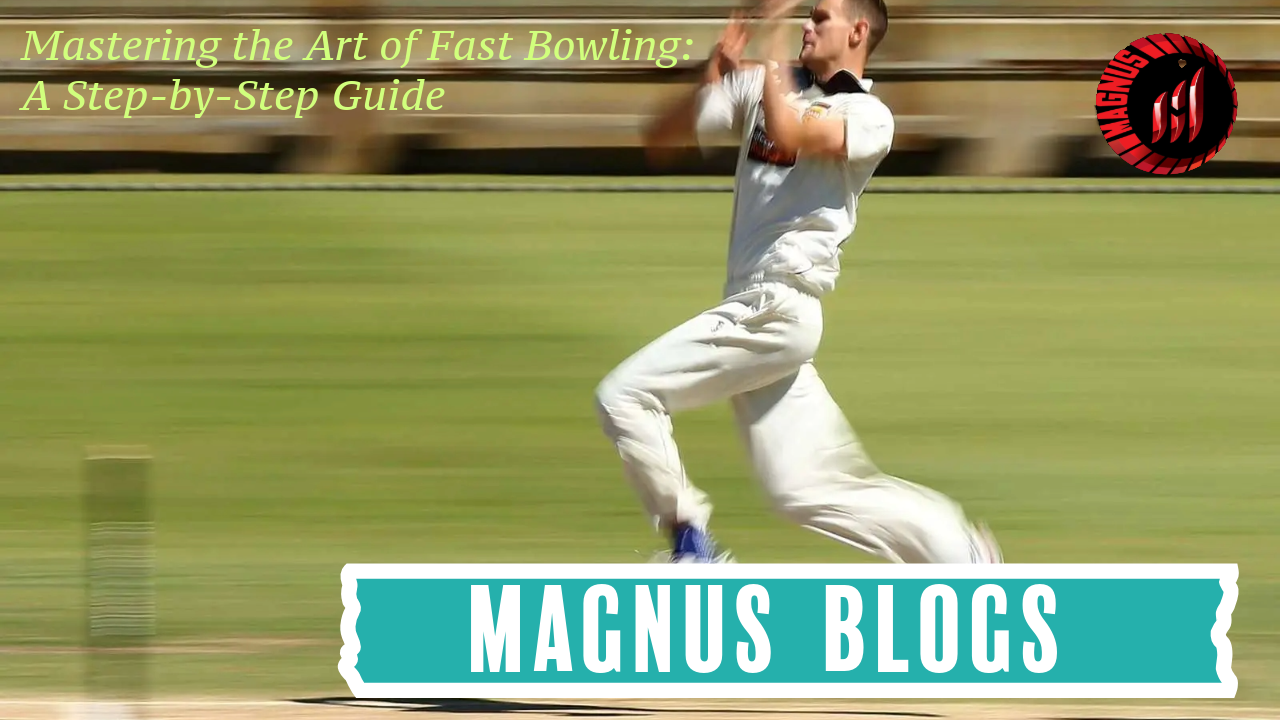Fast bowling is one of the most thrilling aspects of cricket. Whether it's generating raw pace, swinging the ball, or delivering deadly yorkers, a great fast bowler can change the course of a match. However, mastering fast bowling requires a combination of technique, fitness, strategy, and mental strength.
In this comprehensive guide, we’ll take you through a step-by-step approach to becoming a world-class fast bowler.
Step 1: Developing the Right Body Mechanics
Fast bowling puts immense stress on the body, so it's important to develop proper mechanics to avoid injuries and maximize speed.
1.1 Perfect Your Bowling Grip
- Hold the ball with your index and middle fingers close together along the seam.
- The thumb should rest lightly underneath the ball for control.
- Keep a relaxed grip – too tight, and you’ll lose flexibility; too loose, and you’ll lack control.
1.2 Work on Your Run-Up
A well-balanced run-up provides rhythm, speed, and momentum.
- Find a comfortable run-up length (shorter for control, longer for extra pace).
- Maintain a steady stride pattern—don’t rush or slow down suddenly.
- Your final few steps should be explosive, transferring maximum energy into the delivery.
1.3 Master the Bowling Action
Your action determines your accuracy, swing, and speed. There are two main types:
- Side-on action – Best for outswingers, with the back foot pointing towards fine leg.
- Front-on action – Ideal for inswingers, with the chest facing the batsman.
Ensure a smooth jump and landing before delivering the ball. Your back leg should be strong enough to absorb impact, and your non-bowling arm should help maintain balance.
Step 2: Generating Speed & Swing
Speed and swing are the two most crucial weapons for a fast bowler.
2.1 How to Increase Bowling Speed
- Strength Training: Develop leg power with squats, lunges, and sprint drills.
- Shoulder & Core Strength: A strong core helps transfer energy into the ball.
- Explosive Release: Whip your arm down aggressively at the point of release.
- Follow-Through: A strong follow-through ensures you don’t lose momentum.
2.2 How to Swing the Ball
- Outswing: Position the shiny side inside and seam slightly angled towards slip. Release with a slightly open wrist.
- Inswing: Keep the shiny side outside and seam angled towards leg slip. Release with a slightly inward wrist flick.
- Reverse Swing: Use a rough and shiny side technique to deceive batsmen when the ball gets older.
Practicing different grips and wrist positions is crucial to master swing bowling.
Step 3: Mastering Variations & Deliveries
A fast bowler must have a range of deliveries to keep batsmen guessing.
3.1 The Yorker (Toe-Crusher)
- Aim at the batsman’s feet or base of the stumps.
- Release the ball with a low trajectory just before the crease.
- Perfect for death overs to prevent boundaries.
3.2 The Bouncer (Intimidation Tactic)
- Target the batsman’s head or chest region.
- Release with extra effort and aim for a short-pitched delivery.
- Best used sparingly to unsettle the batsman.
3.3 The Slower Ball (Deception Delivery)
- Hold the ball with a looser grip or use fingers to cut across the seam.
- Reduce arm speed slightly while keeping body action the same.
- Great for fooling batsmen expecting a quick delivery.
3.4 The Seam-Up Delivery (Good Length Ball)
- Keep the seam upright and let the pitch movement surprise the batsman.
- Ideal for testing footwork and defensive technique.
A great fast bowler uses a mix of pace, swing, and deception to keep batsmen under pressure.
Step 4: Mental Toughness & Strategy
Bowling is not just about skill—it’s about mindset and strategy.
4.1 Plan Your Spell Wisely
- New Ball Strategy: Focus on outswingers and fuller deliveries.
- Middle Overs: Use variations and short-pitched deliveries to build pressure.
- Death Overs: Yorkers, slower balls, and well-placed bouncers work best.
4.2 Analyzing the Batsman
- If the batsman struggles against swing, exploit movement.
- Against aggressive hitters, use well-directed short-pitched deliveries.
- Observe footwork—if they move early, bowl unexpected lengths.
4.3 Stay Calm Under Pressure
- Fast bowlers often have to handle sledging and pressure situations.
- Maintain focus on execution, rather than getting emotional.
- Trust your training, technique, and instincts in crunch moments.
Step 5: Fitness & Injury Prevention
Fast bowling can be physically demanding, so maintaining peak fitness is essential.
5.1 Strength & Endurance Training
- Leg Workouts: Squats, calf raises, lunges (to strengthen push-off power).
- Core Training: Planks, crunches, and rotational workouts for balance.
- Shoulder & Arm Exercises: Resistance band drills for joint stability.
5.2 Stretching & Recovery
- Stretch before and after matches to prevent muscle stiffness.
- Use ice baths and recovery exercises after heavy bowling spells.
- Drink plenty of water to avoid cramps and fatigue.
5.3 Avoiding Common Injuries
- Back Strain: Avoid excessive bowling without rest.
- Knee & Ankle Injuries: Strengthen joints with low-impact exercises.
- Shoulder Stress: Maintain a smooth bowling action without excessive load.
A well-conditioned body allows fast bowlers to bowl long spells effectively without injury.
Cricket bat types, Cricket equipment in usa, Cricket equipment store, Cricket gloves, Cricket helmet, Cricket kit bags, Cricket retailers, Durable cricket gloves, English willow bats, Icc approved helmets., Kashmir willow cricket bat, Latest kashmir willow bat
